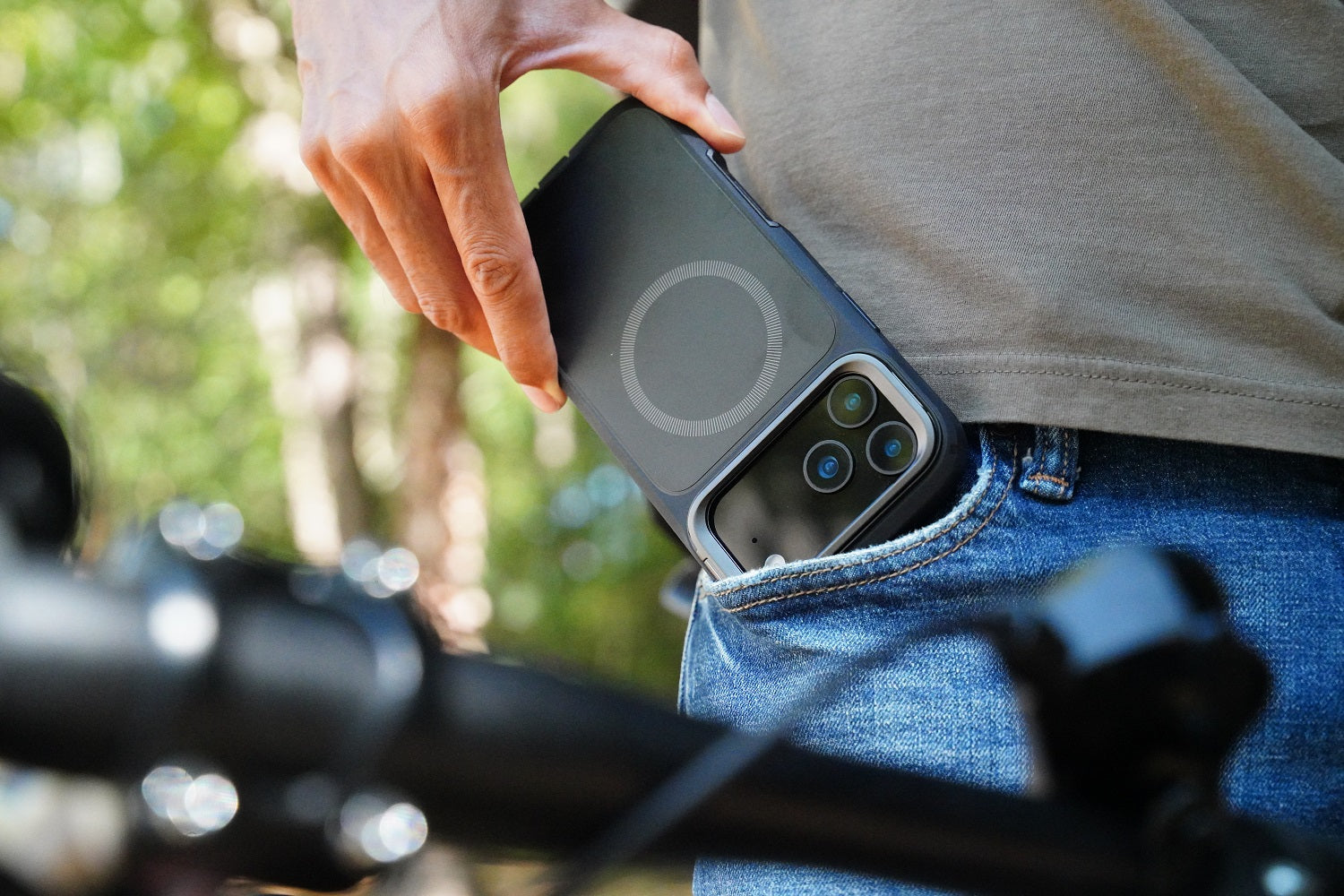Since its launch in June 2007, more than 1.9 billion iPhones have been sold around the world. With its incredible functionality and its constant updates, Apple continues to dominate the market year after year.
This year, Apple plans on releasing the iPhone 14 on September 7, 2022, at its "Far Out" event. We'll get our first look at the iPhone as well as all of its new features, including the new iPhone processor.
In this article, we'll tell you everything we know about the A16 processor and other details about the new iPhone.
The Rumored Updates to the iPhone 14
Every year, Apple makes significant changes to its iPhone lineup that people wait on the edge of their seats for. Although nothing is set in stone yet, we'll tell you everything we know about what's coming up with Apple and the iPhones.
First, Apple is changing the sizes of iPhones in 2022. They'll get rid of the 5.4-inch iPhone mini because of its unpopularity with customers. They'll instead focus on bigger iPhone sizes, and we're expecting to see:
- • 6.1-inch iPhone 14
- • 6.1-inch iPhone 14 Pro
- • 6.7-inch iPhone 14 Plus
- • 6.7-inch iPhone 14 Pro Max
We won't be seeing any 5.4-inch iPhone 14 mini this year.
Let's take a look at some of the updates we're probably going to see this year in the new iPhone.
New Face ID Hardware
Since 2017 introduced Face ID, there has been a notch on the front of the phone to house the equipment needed for facial scanning. The iPhone 14 will see changes to this by eliminating the notch for a new design.
Although there have been several different rumors of what we'll see instead, it looks like there will be a combination of a circular hole-punch cutout to house the camera. There will be another pill-shaped cutout for the Face ID components. However, we'll probably only see this on the Pro models.
Body Design
The iPhone 14 models will look similar to the 13 models with the flat-edged design. There aren't any significant overall design changes expected this year, but the camera bumps on the iPhone 14, and iPhone 14 Pro will probably get considerably bigger.
These camera bumps will be about 5% larger, which means that any phone cases that were designed for the iPhone 13 probably won't fit the 14.
As mentioned earlier, Apple will discontinue the smaller 5.4-inch iPhone because of its lackluster sales.
There might also be a new color shade in the mix — purple. The rumor suggests that both the iPhone 14 and iPhone 14 Pro models will be available in the purple shade that has a special finish that changes tone depending on lighting conditions.
The rumored color series for the iPhone 14 includes:
- • Black
- • White
- • Blue
- • Red
- • Purple
The Pro and Pro Max will also allegedly come in graphite, gold, purple, and silver.
Cooling
The higher-end iPhones might include a vapor chamber thermal system that the phones need due to their powerful computing power and faster 5G connection speeds.
Other smartphone companies like LG, Samsung, and Razer already utilize this technology to keep their phones cool.
The New iPhone Processor
This year, Apple is unveiling the new A16 computer processor. Although we don't know all of the details yet, we take a look at the normal trajectory of Apple's A-series silicon to make educated predictions on how the next chip will perform.
So far, the loudest rumors seem to say that the new upgraded processor will only appear in the iPhone 14 Pro and the iPhone 14 Pro Max. The normal iPhone 14 models, on the other hand, will continue using the same A15 processors used in the iPhone 13 Pro models.
Let's take a look at some of our predictions for the A16 below.
A16: For the Pro Only
Usually, the newest A-series SoC (system-on-chip) powers the newest iPhone lineup in the fall. The Pro models will typically have more RAM, but it's usually the same or a similar chip.
However, Apple changed this tradition with the iPhone 13. The iPhone 13 Pro and Pro Max had more RAM (6GB compared to 4GB in the other models), but they also contained five GPU cores compared to the four that were in the other models.
Most likely, Apple utilized the same chip design but with one of the cores disabled, which is a common tactic in advanced chip fabrication. However, it was the first time Apple made this change.
With the A16, rumors are that the new chip will only be available in the iPhone 14 Pro and Pro Max. Allegedly, the non-pro iPhone 14 models will get the boosted A15 chip (6GB, 5-core found in iPhone 13 Pro models). Even though they won't be getting the new A16, it is important to note that this is still a respectable upgrade from the last model.
This tip might help signal other facets of the new phone. Since the A16 will only show up on the considerably more expensive phones, it might allow it to have larger and better features. The new iPhone Pro models might have features like an always-on display and a new 48MP rear-wide camera.
Manufacturing Process
Rumors say that the new microchips will be manufactured on a 5nm manufacturing process, which is how the A15 and A14 were made. Other rumors have stated that it will be a 4nm process, but the TSMC (Taiwan Semiconductor Manufacturing Company) doesn't actually have that.
They do, however, have N4P, which has:
- • An 11% performance boost
- • A 22% power efficiency improvement
- • A 6% improvement in density over the original 5nm "N5" manufacturing process
Although it is an improvement from last year's manufacturing process, it's not the biggest leap compared to previous upgrades.
CPU Performance
Apple's current core configuration for their iPhones is more than well-suited for what the iPhones can do. Having two high-performance cores and four high-efficiency cores is more than enough to run simple apps on the phone.
Apple's main priority will probably be to improve power efficiency and make the CPU cores run faster. One rumor reported that the A16 tested to be 42% faster than the A15. However, that is probably not a reasonable prediction.
However, the A16 should have improved memory bandwidth, higher peak clock speeds, and around a 15% performance improvement.
One notable rumor is that the A16 might be Apple's first ARMv9 compatible design, which could make significant improvements to the CPI operations.
GPU Performance
Apple continues to make significant investments and improvements in its GPU performance, even though they are much better than other smartphones in this area.
The A16 will either have five or six GPU cores (similar to the A15), but probably no more than that. This plus architectural improvements will help increase memory bandwidth and increase graphics performance.
We expect a 25% to 30% improvement in GPU performance, which is around the amount that we typically see in next-generation A-series processors.
ML and Imaging
One of the biggest rumors surrounding the iPhone 14 Pro is that it will have a new 48MP wide rear camera. This will make a significant improvement in photo quality.
In bright-light situations, you could get images that have 4x the resolution of today's iPhones. In low-light situations, the camera can "bin" light values of neighboring pixels to create a 12MP pixel. This is a stepping stone that could lead to 8K video as well as powerful zoom capabilities.
However, these improvements cause a significant strain on the phone's processor. It will need to have wider and faster data paths to the image signal processor, which in turn needs to be able to handle 4x the number of pixels.
The new camera will need a much more powerful image signal processor and Neural Engine. Only time will tell if the new iPhone 14 Pro will be the first phone to offer it.
LPDDR5 RAM
Last year, it was rumored that the LPDDR5 would replace the LPDDR4x (but it didn't happen). This year, however, supply chain analyst Ming-Chi Kuo has already announced that Apple will use LPDDR5 for the iPhone 14 Pro models.
This upgrade will improve memory bandwidth by up to 50%. It should also improve energy efficiency, too.
Upgrade to Snapdragon X65 Modem
Although the cellular modem isn't a part of the A16 chip, it is a crucial and tightly integrated facet of the platform, so we'll mention it here.
The iPhone 14 Pro is expected to use the Snapdragon X65 modem. It should provide better power efficiency and reliability. You will be able to reliably lock on to signals at a better rate, which means you get improved real-world throughput and use less battery.
The Future of the iPhone
That's everything you need to know about the new iPhone processor. As always, Apple provides significant upgrades that ultimately end with a much better user experience.
If you're an avid iPhone user, make sure you're always keeping your phone safe and styled with the latest accessories. Check out our products today!















Leave a comment